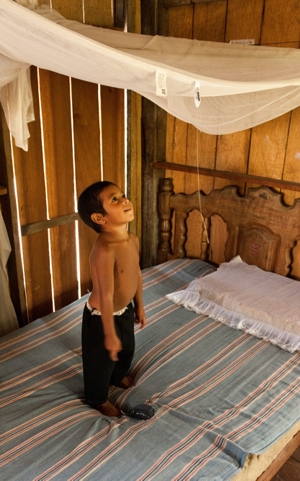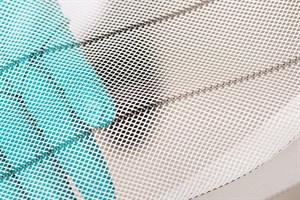Chlofenapyr from BASF has become the first new class of public health insecticide for malaria prevention to be introduced in more than 30 years.
| Working with the Innovative Vector Control Consortium (IVCC) and the London School of Hygiene & Tropical Medicine for more than 10 years, BASF has successfully repurposed chlorfenapyr to be effective on mosquito nets and meet stringent World Health Organisation (WHO) performance thresholds for public health. Dave Malone, IVCC Technical Manager, said: “The collaboration with BASF gave us access to an insecticide with a rare combination of attributes: New to public health, effective against resistant mosquitoes, and able to coat polyester netting with a long-lasting formulation.” Marketed under the brand name Interceptor G2, the long-lasting insecticide-treated mosquito net is the first to contain non-pyrethroid chemistry. It is being hailed as a game changing breakthrough in the fight against malaria. A second chlorfenapyr product, an indoor residual spray named Sylando 240SC, is also in the final phases of WHO evaluation. Chlorfenapyr has been used in agriculture and urban pest control, including in homes and food handling areas, worldwide since 1995. It belongs to the pyrrole class of chemistry and works by disrupting the insect’s ability to produce energy. Around the world, every two minutes a child dies from malaria and there are more than 200 million new cases every year. Malaria is also a major cause of global poverty and its burden is greatest among the most vulnerable. Long-lasting insecticide-treated mosquito nets (LN) and indoor residual sprays are the cornerstones of malaria prevention, particularly in sub-Saharan Africa. But 60 countries have already reported resistance to at least one class of insecticide used in them. Independent trials in Benin, Burkina Faso, Tanzania and Ivory Coast have proven the efficacy of Interceptor G2 and Sylando 240SC against local insecticide-resistant mosquitoes. Medical entomologist Professor Hilary Ranson from the Liverpool School of Tropical Medicine has studied the problem for many years. “We’ve got to take insecticide resistance very seriously,” she said. “In some countries, the local mosquito population has increased its level of resistance 1,000-fold. It has been years since a new class of public health insecticide has appeared on the market. Alternatives are urgently needed.” |
 There are more than 200 million cases of malaria each year and almost half a million deaths. Infants, children under five and pregnant women are the most vulnerable groups There are more than 200 million cases of malaria each year and almost half a million deaths. Infants, children under five and pregnant women are the most vulnerable groups
|
|
| Following the WHO recommendation, BASF will start preparations to launch Interceptor G2 for malaria prevention. Depending on local registration processes, the new mosquito net is expected to be available to health ministries and aid organisations towards the end of this year.
Editor’s note: |
||


